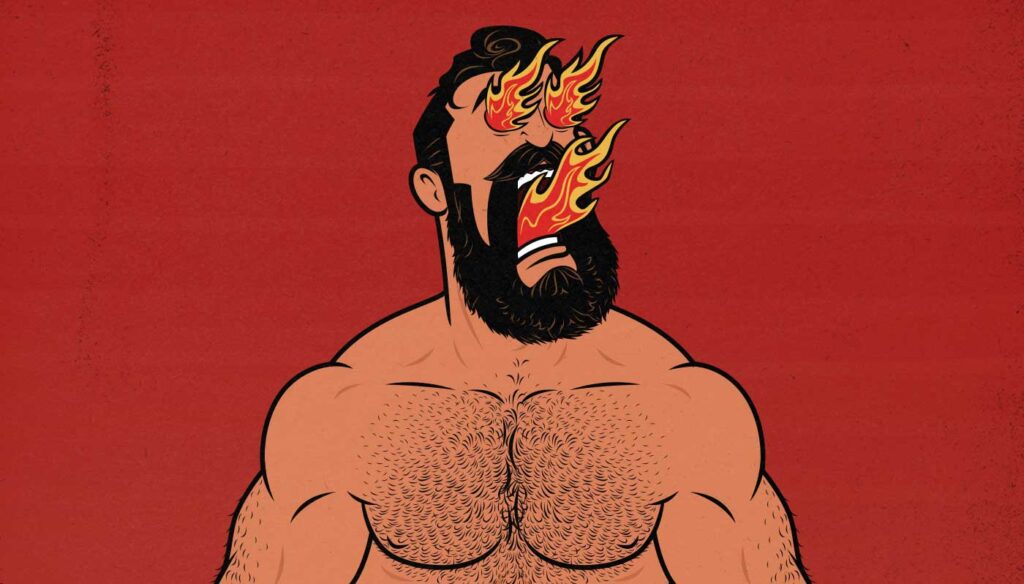
How Long Do You Build Muscle After Working Out?
When you lift weights, you stimulate muscle growth. How long after your workout does that stimulus last? And how long does it take for your muscles and tendons to recover? If you can balance those two factors, you’ll know how often to train each muscle.
This is especially important if you’re bulking. You need to make sure your body is primed for muscle growth before you shovel down all those extra calories.
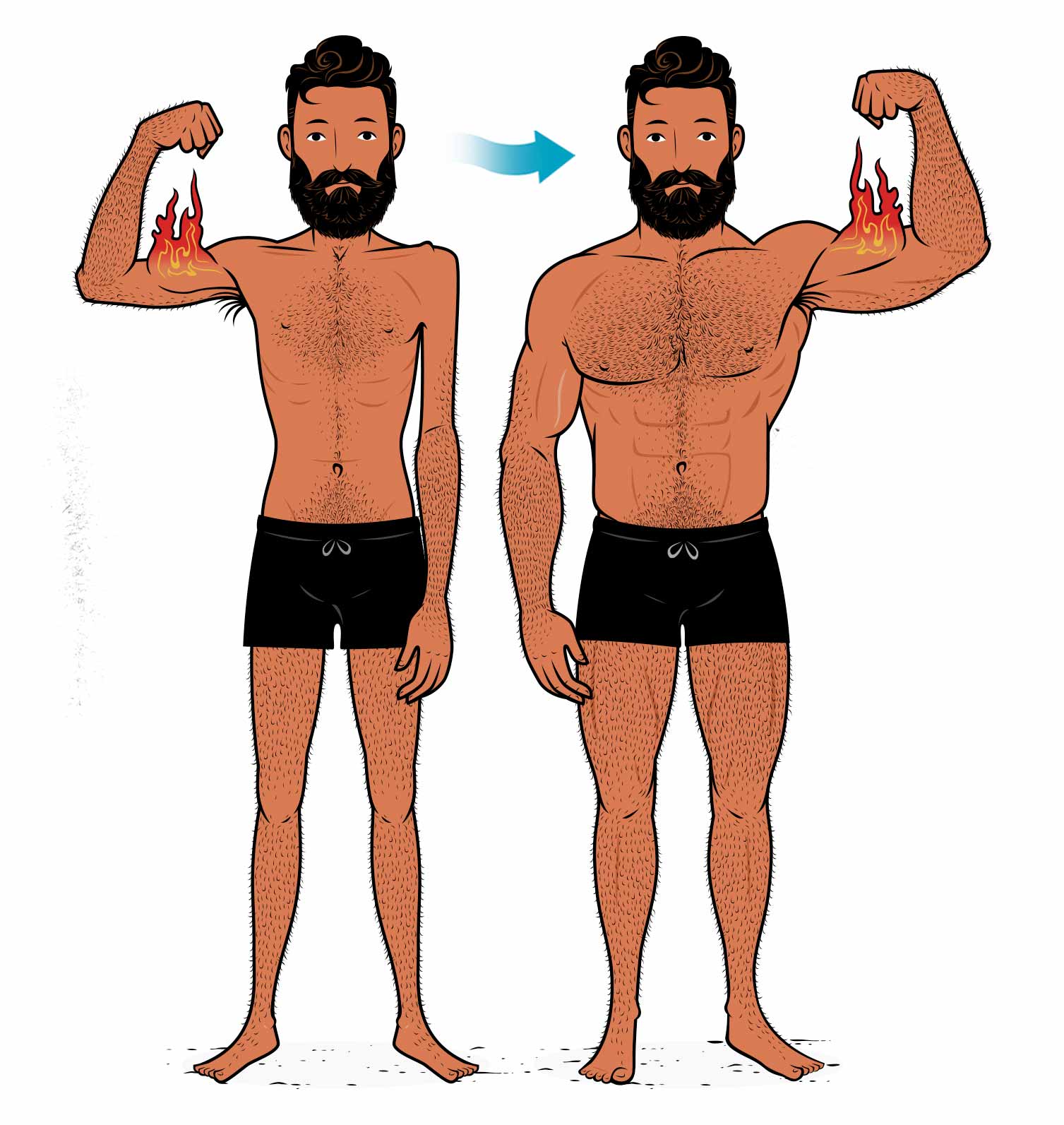
How Long Does Muscle Protein Synthesis Last After Working Out?
If we’re talking about protein synthesis, the effect doesn’t last very long. Weight training boosts it for around a day (study). That’s why you’ll have some people thinking they need to lift weights every day to keep themselves building muscle all week long. But we aren’t interested in overall protein synthesis, we’re interested in myofibrillar protein synthesis. We’re interested in the growth of our muscle fibres.
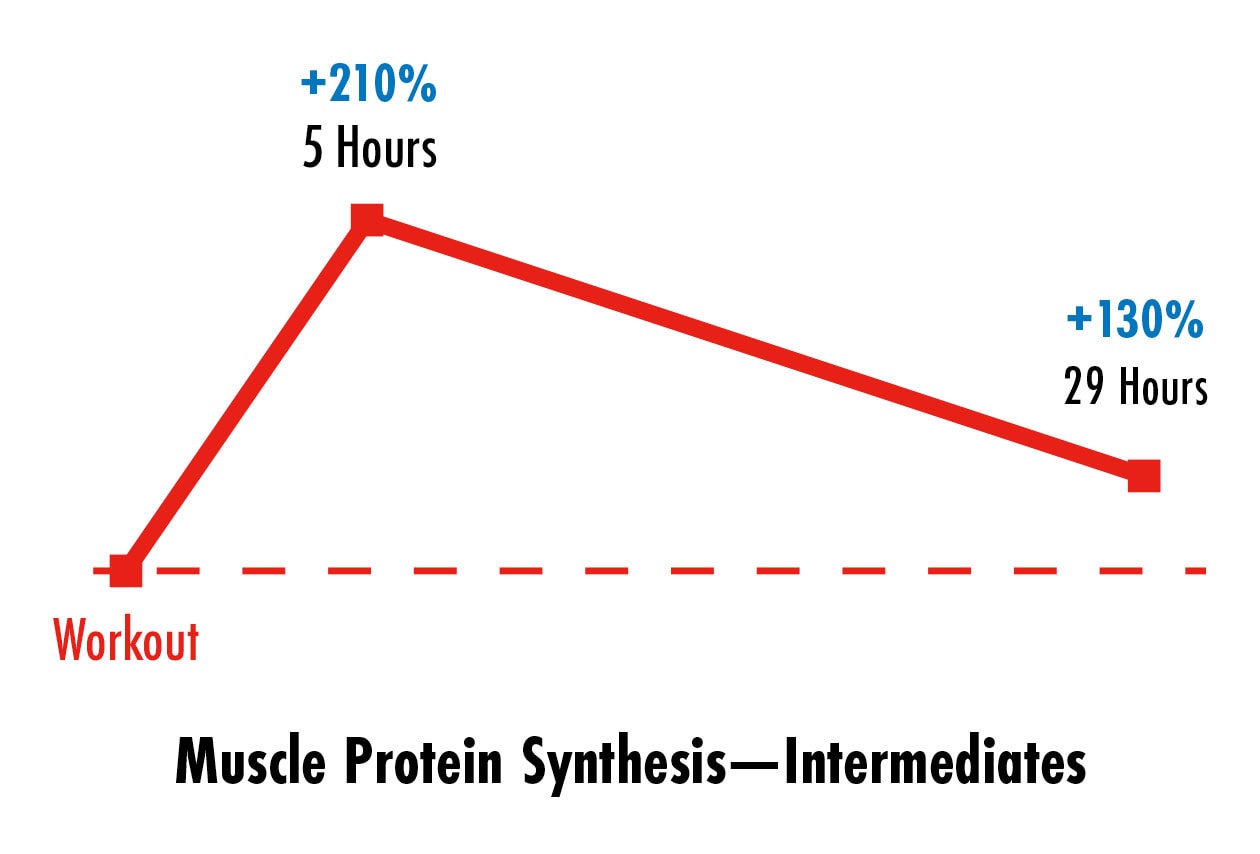
- In a study by Burd et al., the participants did one exercise for 3 sets. Just one exercise. Just 3 sets. And even that tiny workout stimulated muscle growth for well over a day.
- In a study by Damas et al., the participants did 6 sets of an exercise. Twice as much training volume. And this time, the workout stimulated a over 2 days of muscle growth.
- In a study by Miller et al., the participants were put on a bizarre workout program. They did an hourlong “leg-kicking” workout with light weights for high reps. I’m hesitant to reference this study because of how strange the workout was, but it stimulated over 3 days of muscle growth.
- In a systematic review by Damas et al., the researchers compared beginners against intermediate lifters. There’s a common idea that as we gain more experience lifting weights, we recover more quickly and need to train more often. But it seems that both beginners and intermediates get at least a couple of days of muscle growth from a hard workout. (The beginners did gain more muscle, though. “Newbie gains” are a real thing.)
So it seems that when you train a muscle, you can stimulate 2–4 days of muscle growth. How long that muscle growth lasts depends on how hard you train that muscle. Doing more sets will stimulate more muscle growth over a longer period of time.
If you work out before your muscles have recovered, nothing bad will happen, but you won’t stimulate much extra muscle growth, and you’ll have trouble adding more weight or wringing out more reps. That’s why most workout programs give a muscle at least a day of rest before training it again.
How Long Does it Take to Recover Between Workouts?
Muscle recovery lines up fairly well with muscle growth. Your muscles recover within a couple of days. Even if there’s still a bit of soreness, you’ll probably be able to lift at least as much weight as in your last workout.
That is, once you get used to lifting weights. Your very first workout might cripple you for a week. Over time, as you get used to lifting weights, you’ll grow tougher. You’ll stop causing as much muscle damage and you’ll stop getting as sore. This effect kicks in fast, too. In a study by Zourdos et al., it took the participants 4 days to recover from their first workout but only a single day to recover from their second. (If I recall correctly, that’s why Dr. Mike Zourdos recommends easing into a workout routine, starting with fewer sets per exercise.)
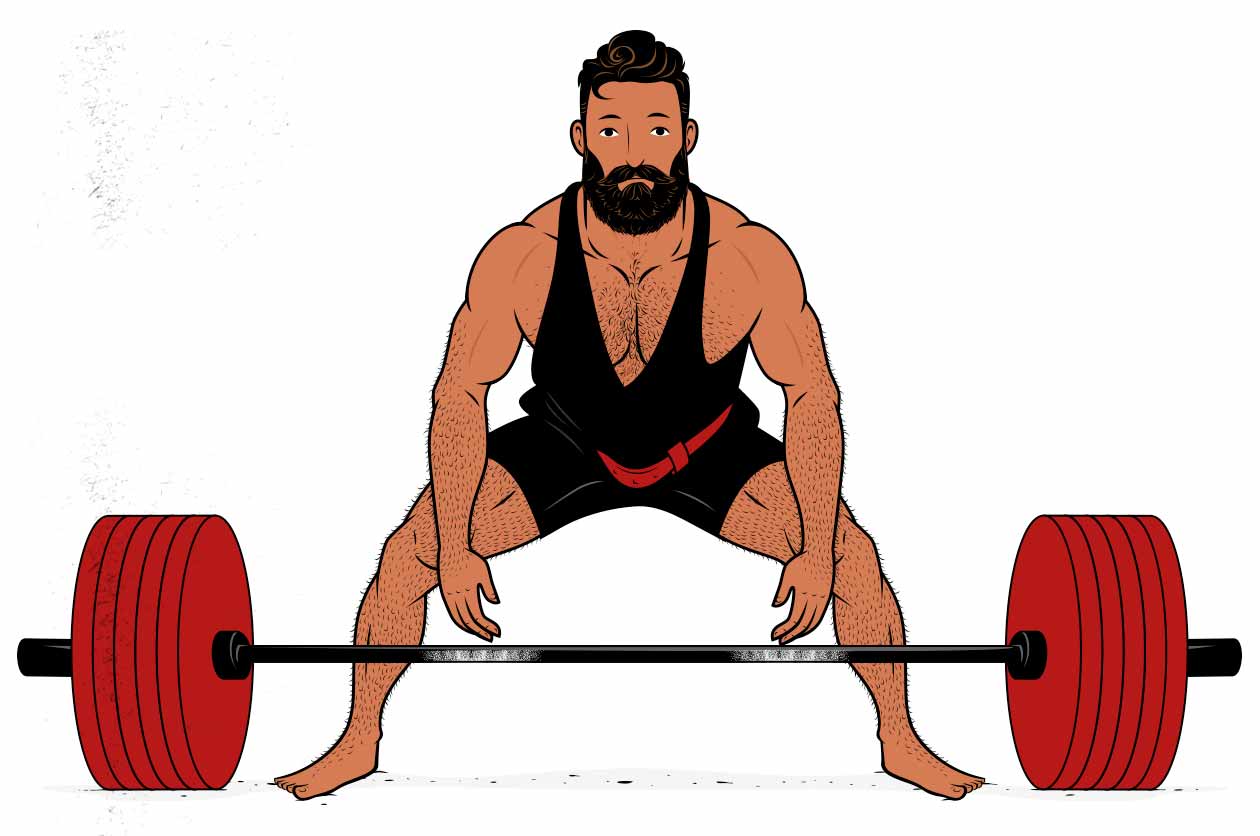
The other thing to consider is that your muscles aren’t the only things that need to recover. You’re also placing stress on your joints, tendons, and bones. Those areas tend to be more resilient, accumulating damage more slowly. But they also have less blood flow. They take much longer to heal and adapt. Over time, they’ll grow denser and become incredibly resilient. But it takes time. It takes patience.
Putting this all together, you want to start small and build from there. During your first week of training, start with 1–2 exercises per muscle and do just a couple of sets per exercise. A full-body routine is great for that. That way you aren’t causing too much muscle damage or crippling soreness. Next week, add a third set. The week after that, maybe you add a fourth set to some exercises.
Then, when you’re deep in the habit of lifting weights, and your workouts are starting to get long and tiring, try breaking them up into smaller workouts. That’s when training splits become valuable. Or, if you only have 2–3 days to train every week, maybe you try specializing on just a few muscles at a time. Spend 3 months focused on growing your arms while maintaining the rest. Then spend 3 months focused on bulking up your back while maintaining the rest. That kind of thing.
How to Stimulate Muscle Growth All Week Long
Full-Body Workouts—Ideal for Most Beginners
If you’re doing fewer sets per muscle, your workouts won’t stimulate muscle growth for as long. To keep your muscles growing all week long, you’ll need to train your muscles more often. Since you won’t be doing much work per muscle, though, you can train more of your muscles every workout. Maybe you do a full-body workout routine, like so:
- Monday: full-body workout #1
- Tuesday: rest
- Wednesday: full-body workout #2
- Thursday: rest
- Friday: full-body workout #3
- Saturday: rest
- Sunday: more rest
Every workout, you do an exercise for every major muscle group. Maybe you do squats, the bench press, Romanian deadlifts, chin-ups, and a couple of isolation lifts. Just a few sets per exercise. And maybe you use supersets and giant sets to keep your workouts short, dense, and effective.
The reason full-body workouts work so well for beginners is that they give all of your muscles enough time to recover between workouts. For example, your lower back is worked by most compound lifts, including squats, deadlifts, and barbell rows. Your grip and upper traps are worked by any lift that has you holding a barbell or dumbbell. If you do a training split that has you working different muscles every day, some of your stabilizer muscles will be trained every single day. If you’re a beginner, and those stabilizer muscles aren’t robust yet, that can be too much.
On the weekend, take an extra day of rest to get rid of any lingering muscle damage and soreness. That way you start the next week fresh.
Training Splits—Ideal for Many Intermediate Lifters
If you’re doing more sets per muscle, a hard workout can stimulate a few days of muscle growth. You’ll also cause more muscle damage and need longer to recover. And because you’re doing more sets, your workouts will be longer and harder. You might not have the time or energy to train all of your muscles every workout. That’s when training splits come in handy. Maybe you use an upper/lower split, like this:
- Monday: upper body
- Tuesday: lower body
- Wednesday: rest
- Thursday: upper body
- Friday: lower body
- Saturday: rest
- Sunday: rest
With this routine, you’re doing your bench presses, chin-ups, rows, overhead presses, and upper-body isolation lifts on one day. On the next day, you combine some squats, deadlifts, and lower-body isolation lifts. Because you’re training fewer muscle groups, you can hammer each muscle a bit harder. Those extra sets will stimulate more muscle growth over a longer period of time.
Again, as a default, we recommend taking two days off in a row. It helps to get rid of any lingering soreness and fatigue. Not everyone needs that extra rest, but most people benefit from it.
For more, we’ve got a full article on training frequency and workout splits.
Should You Eat a Calorie Surplus if It’s Been Days Since Your Last Workout?
Let’s say you’re bulking, doing full-body workouts 3 days per week, 3–8 sets per muscle per workout. Sunday rolls around. It’s been over 2 days since your last workout. The muscle stimulation from your last workout is fading. Maybe it’s gone. Should you still be eating in a calorie surplus? Will those extra calories get stored as fat?
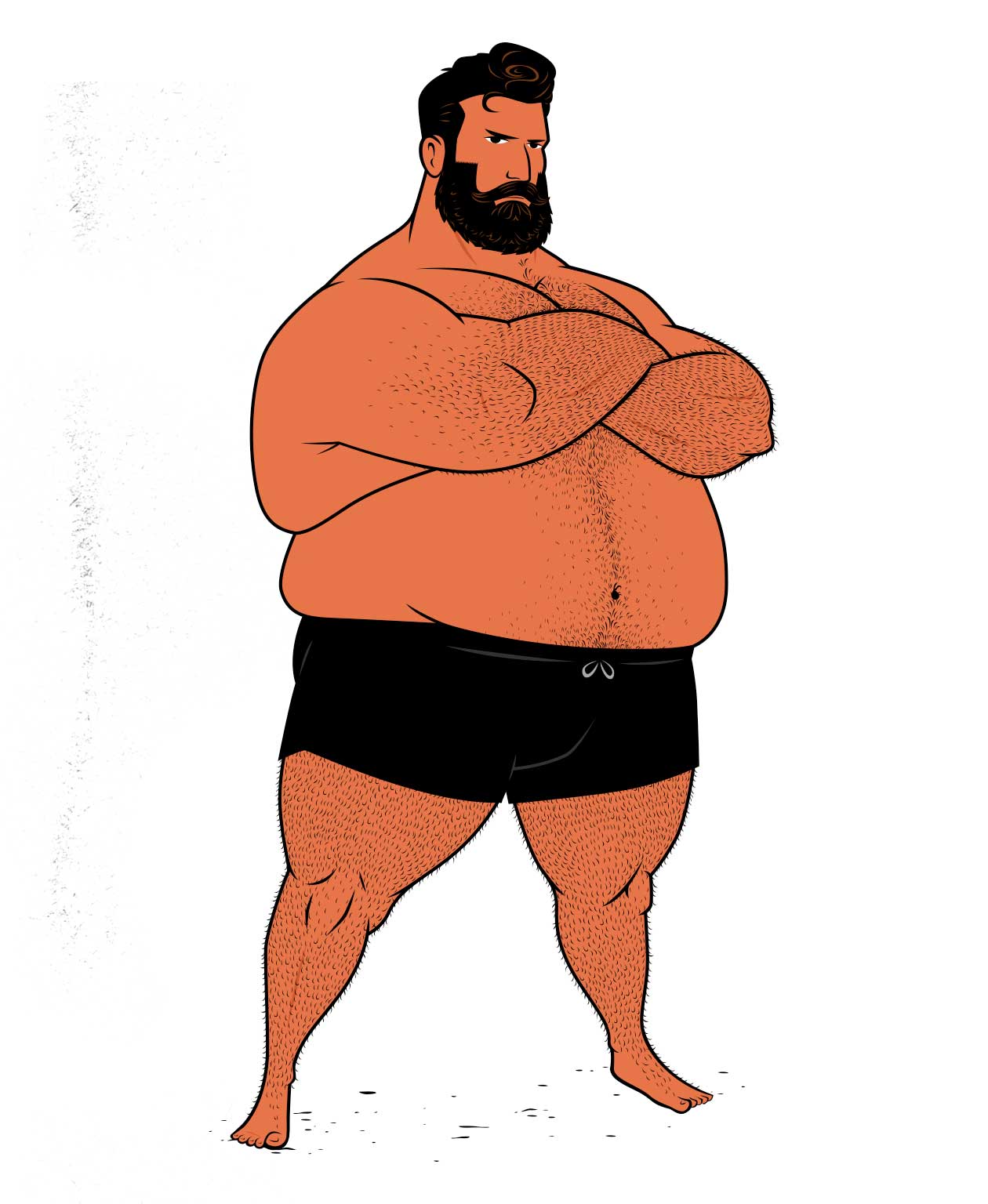
If you’re an intermediate lifter doing just 3 sets per muscle, you might not be stimulating muscle growth for long enough. If it’s been a couple of days since you hit the gym, you might want to ease back on the food. But if you’re a beginner, you’re starting a new training phase, or you’re doing more like 4–8 hard sets per muscle, then you’ll still be building muscle on Sunday. Keep eating big.
If you’re sick of overeating and you want a day off from bulking, Sunday is the best day to do it. When bulking, I’ll often take Sunday off, letting myself eat according to my appetite. And my appetite is meagre at best. When I listen to it, I tend to eat at maintenance. Sometimes I don’t even quite reach maintenance.
But if you don’t mind eating in a slight calorie surplus, you should probably still eat big on Sunday (or whatever day it happens to be). Stick to your regular bulking diet. You might not build as much muscle, but you’ll still build muscle. And besides, the extra rest day is to catch up on recovery. Eating more calories means better recovery.
Now, if you’re taking a longer vacation from lifting and it’s been a week since you last stepped in the gym, that’s when you might want to ease back on the calories. If you haven’t been lifting weights for the past few days, you aren’t bulking anymore, you’re just overeating. Ease back.
For more, we have a full article on how to eat a good bulking diet.
Summary
A challenging workout will stimulate around 2–4 days of muscle growth. The more hard sets you do per muscle, the longer the stimulus will last.
Getting more precise, 3 hard sets can be enough to stimulate 2 days of growth. 6 hard sets can stimulate as many as 4 days of muscle growth. So if you’re doing full-body workouts 3 days per week, aim to do at least 3 sets per muscle. If you’re doing a training split where you train each muscle just twice per week, aim to do at least 6 sets per muscle.
If you’re bulking, and if it’s been more than a few days since your last workout, you should ease back on the calories. Get out of the calorie surplus. Otherwise, you’ll gain proportionally more fat. Then, when you get back to lifting weights, get back to eating big.

If you want more muscle information about gaining muscle and strength, we have a free muscle-building newsletter for skinny guys and for thin women. If you want a full foundational bulking program, including a 5-month full-body workout routine, diet guide, recipe book, and online coaching, check out our Bony to Beastly Bulking Program (for men) or Bony to Bombshell Program (for women). And if you’re an intermediate lifter who want to continue getting bigger and stronger, check out our Intermediate Muscle-Building Program.



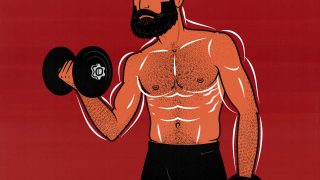
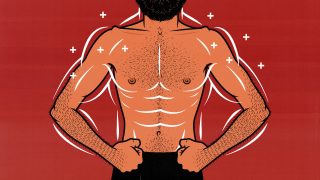
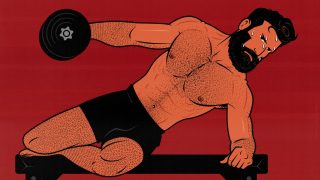

Phenomenally useful article – thanks guys
Thank you, Jura!
biggest pile of steaming BS in the world. lifted weights everyday for 6 years, until mmy arm would collapse. there is NO sign of ANYTHING. I give up! My arms are still muscle-less..
What seems like BS?
Training a muscle every day isn’t the ideal way to train, but it might be plenty of stimulus, depending on what you’re doing and how hard you’re pushing yourself.
But stimulating muscle growth isn’t the only necessary part of building muscle. If you’re like me, you may not intuitively eat enough food to support muscle growth. In my case, unless I’m intentionally eating in a calorie surplus, I don’t make any progress at all, ever. Add up that lack of progress over 6 years, and it would be nothing, even with perfectly optimised training.
I’m not sure what your limiting factor is. I don’t know enough about you or what you’re doing. But there’s something holding you back. You can fix it.